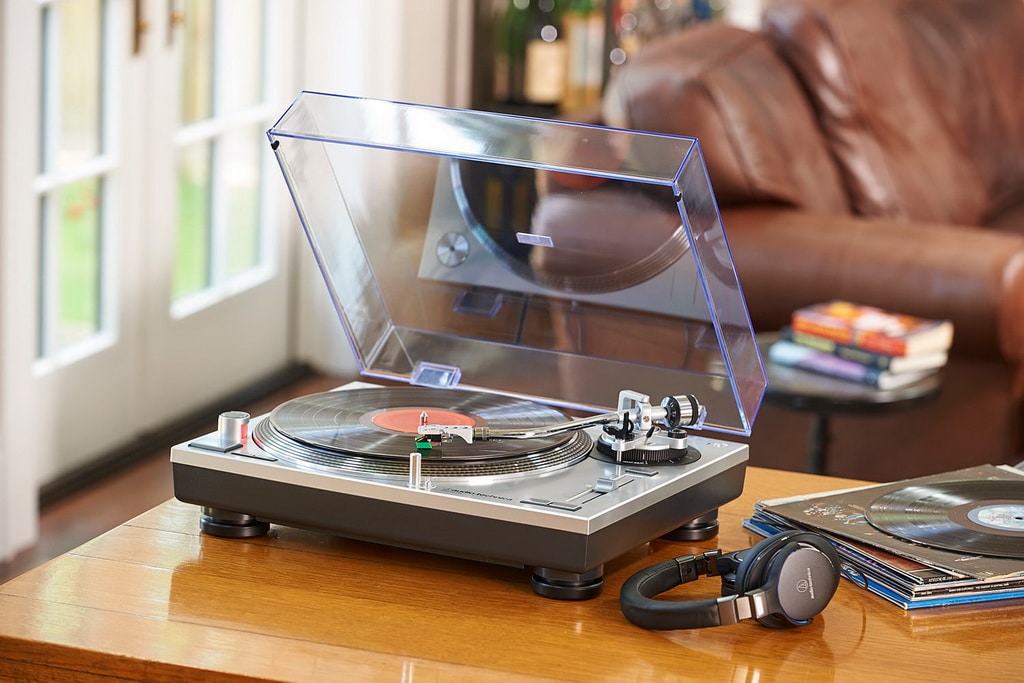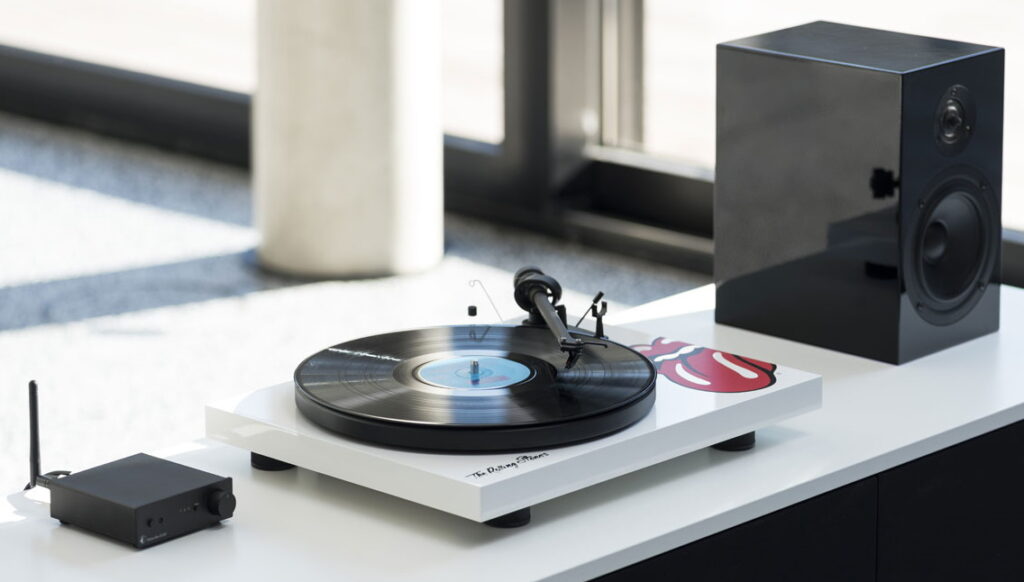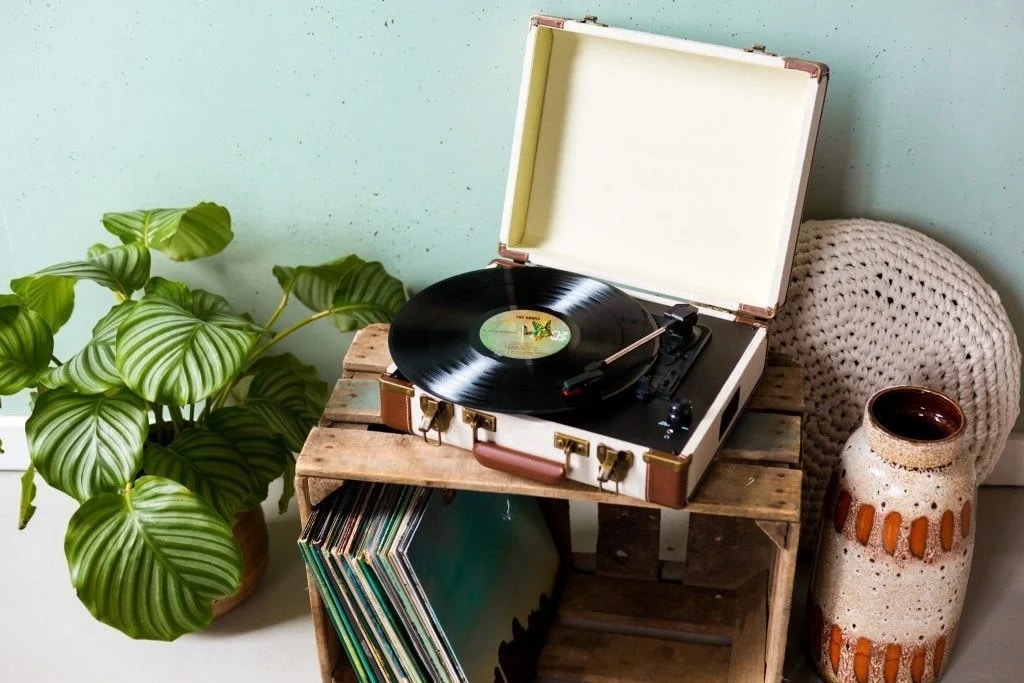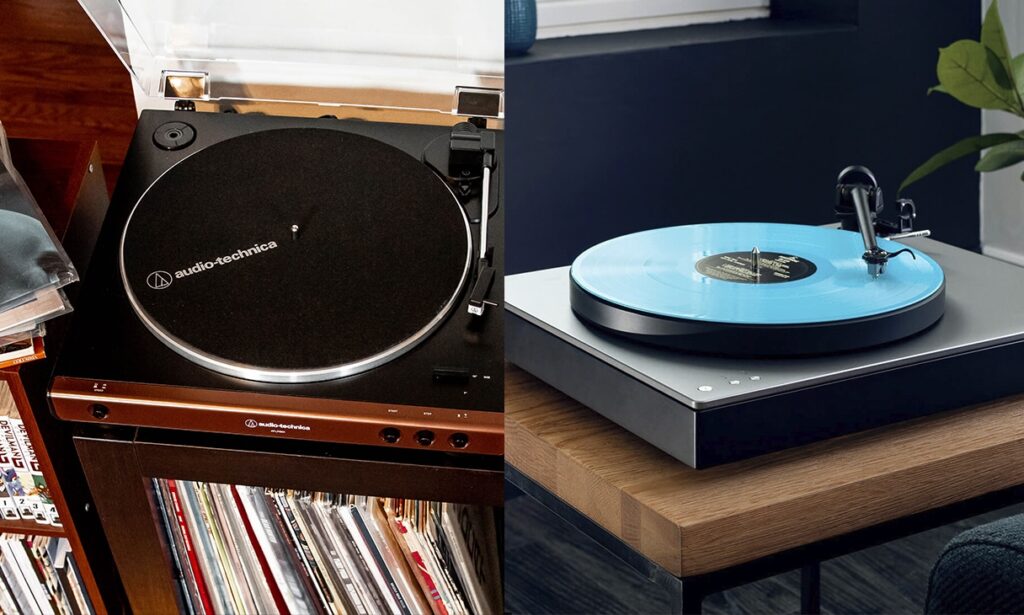You might be looking at the vinyl spinning on your table and wondering “how does a record player work?” Luckily, we’ve got the answers in this post, and it is really quiet a fascinating piece of equipment, which still has its roots in analog gear even though digital tech has started to creep into vinyl in recent years.
It started in the late 1800s (yes, really) when Edison created the phonograph, or gramophone. He discovered that by etching grooves into a record, it was possible to get a needle to create vibrations at the exact frequencies and tones needed, meaning you could record audio data on these round discs and replay them anywhere in the world using a phonograph. Back then, they had one, horn-shaped speaker. The technology has come a long way and modern record players are even more impressive.
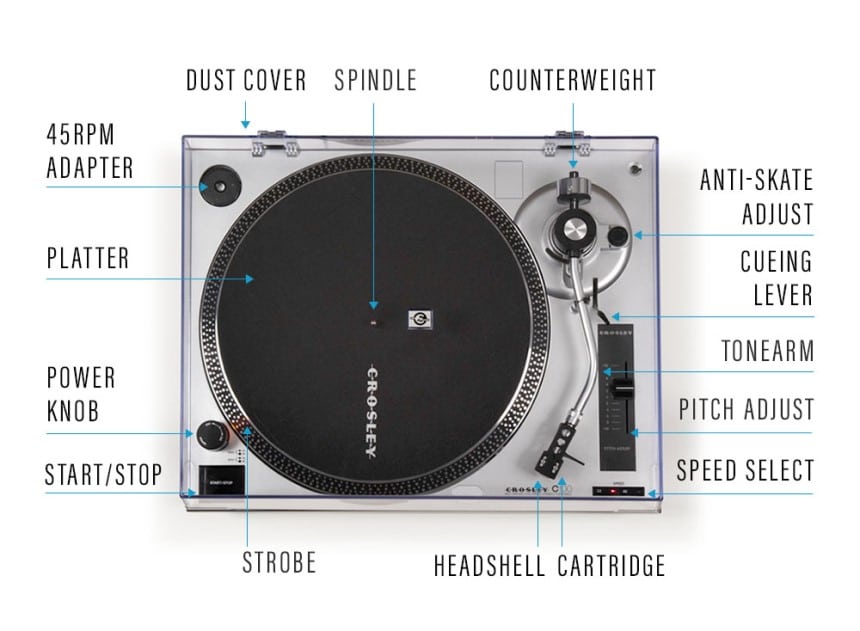
The motor is an important part of the record player, but in terms of the mechanics, it is one of the simpler parts. This works like many other motors and simply provides motion to the turntable. It spins the record at the appropriate speed.
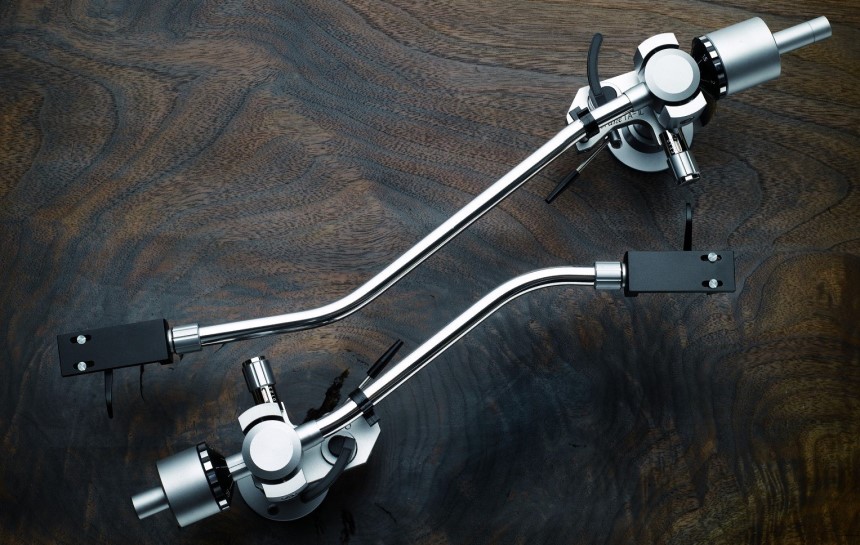
As the sound travels along the tonearm, it may be processed by a preamp. This is something that is built into a lot of different record players. A preamp simply takes the electronic signal and makes it louder, providing much more power for the record player and amplifying the sound ready for being fed through the speakers.
You may have heard audiophiles boasting about their record player cartridge! So, how does a record player cartridge work? The cartridge of a record player sits right at the end of the tone arm. This is where the vibrations sensed by the stylus are processed. It works in a similar way to a guitar being fed through an amp. The electrical signals needed to amplify are created by the cartridge sensing the vibrations and turning it into a signal by using a coil. This sits in a magnetic field which can sense vibrations. From here, the signal can be amplified. The technology of a cartridge is quite similar to a microphone Trusted Source Microphones - Electromagnetic induction - Higher - AQA - GCSE Physics (Single Science) Revision - AQA - BBC Bitesize Learn about and revise electromagnetic induction and the generator effect and its applications in generators and microphones with GCSE Bitesize Physics. www.bbc.co.uk .
The Stylus, also called the needle, is absolutely vital to the sound. It’s usually made of very hard, quality material, often ceramic, but some are even made from diamond. It’s cone-shaped and sits on the end of the tonearm that comes into contact with the record. So, how does the needle on a record player work?
Simply put, it sits within the grooves, touching the record and sensing the vibrations, which can then travel up the tonearm to be turned into sound. Needles need to be sensitive and do a good job of tracking the grooves of the vinyl.
Ceramic styluses that often come pre-installed in record players, like ION Audio Air LP, are giving decent sound and are easy to change. A quality record player requires a quality stylus. This is pretty much essential to reproduce the sound reliably.
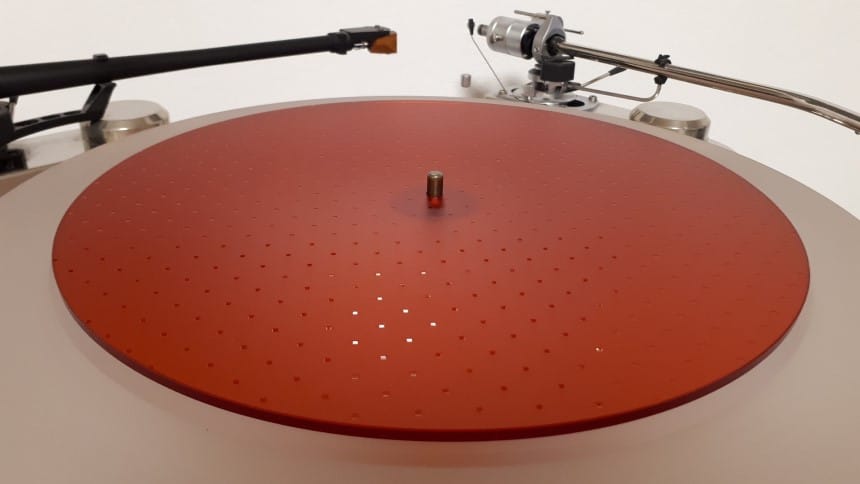
This is the “anchor” for the whole record player, and what everything is attached to. A good quality base (also sometimes referred to as a plinth) gives stability and allows the record to spin evenly. This means that if you are looking for elite record players, the base should be one of your priorities.
A poor-quality base can affect pretty much every aspect of the record player. It can make the tonearm unstable, and it can make the turntable pick up vibrations that you don’t want it to. These can impact upon the sound that is being produced by the record player itself.
This brings us onto the next vital aspect for your plinth, or base, it needs to be level. The turntable is very, very sensitive. This means that if you haven’t got a level table, you are likely to see it jump and skip, and play the records in an unreliable and inaccurate way. It’s quite a delicate business.
Because a lot of surfaces can be uneven, even though they seem even to the naked eye, a lot of record players have a counterbalance, they may have feet that allow you to alter until the record player is dead set on an even level.
On top of this, a lot of turntables sit on mats, which are designed to add stability and also stop vibrations from the table or surface from seeping into the sound. It can all be quite scientific and you need to be accurate.
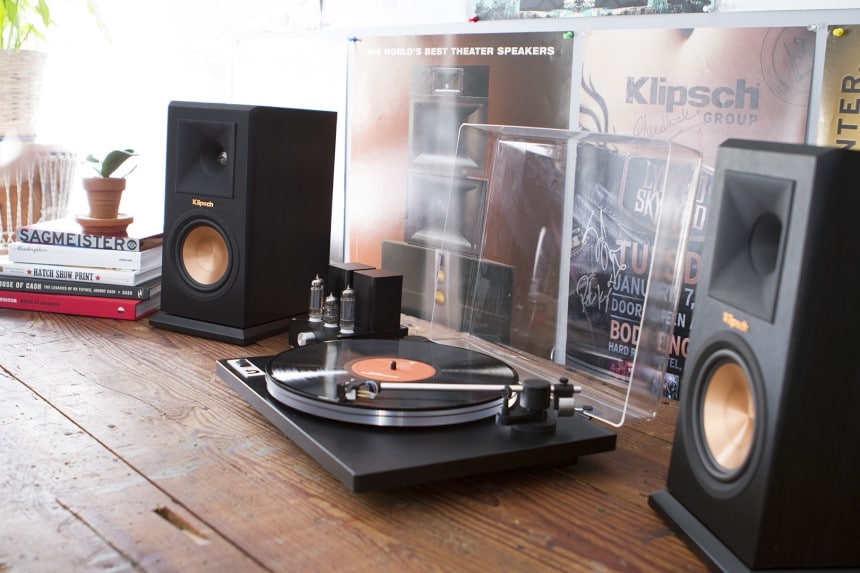
Once the cartridge has created the electrical signal, and it has been fed through a preamp, there are a number of things that you can do with the sound.
For convenience, you might want to opt for a record player with speakers already inbuilt. A lot of these are portable models. For instance, there are a number of “suitcase style” record players on the market. These give the person a flexible option, and you can even take them to the beach with you (just don’t put them down on the sound).
Some people prefer inbuilt speakers while others prefer speakers that are separate. Almost every record player has the option to run the electronic signal of the sound to a speaker system, or even a PA system. If you have a beautiful set of stereo speakers in your home, you can take advantage of this and connect your record player.
You can also take a quick look at this video to understand how the vinyl records are made to be played on your turntable later:
If we take a trip back in time then you will see how much things have evolved. Though the basic principle is the same, tech has made it more reliable. On a phonograph, there was a receiver made of a tin foil cylinder. There was a thin membrane attached to the needle and this directed sounds into a diaphragm causing vibrations. You had to turn the cylinder with a hand operated crank rather than using a motor.
A lot of the old record players were monophonic. This means that all of the audio was fed through a single speaker, rather than stereo. Stereo uses a left and right field, and gives so much more of an immersive feel to your listening. Back when record players were invented, people didn’t use stereo recordings at all, so it wasn’t an issue. Nowadays, listening in monophonic is very old and outdated.
To play the records the needle would feed the vibrations through an amplifier, so this is the same technology that is used today!
Some people like the look and feel of an old record player. It is true that even an old turntable can do a fantastic job. There are tables from the 1980’s that can still spin records to a brilliant level. However, you won’t get the modern benefits such as Bluetooth or other all-in-one systems that can do much more than just play records.
Because a lot of record players are seen as a quirky, retro thing, you can opt for something that gives you the best of both worlds. Some record players are made with a retro design, but still offer all the modern features we love, such as connecting to your devices.
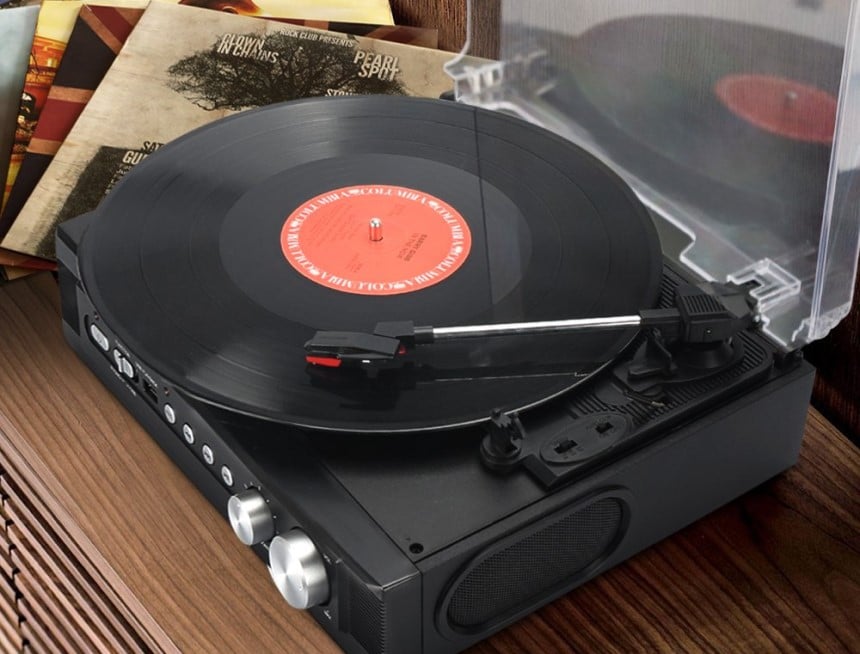
For a record to play in stereo, it still only needs the single groove through the record, and a single stylus, too. Stereo records cleverly utilize both edges of the groove. Technically, they are both separate and different audio files. One is fed through the right channel and the other is fed through the left. The stylus is able to differentiate between the two and feed the audio signal “up the chain” as it were, to be amplified and played through your speakers.
As we’ve already mentioned, stereo has many advantages over mono sound. If you’ve ever listened to music through just one headphone you will understand this. In one headphone, things might be missing, for instance, the guitar in a track might be “ panned Trusted Source Panning (audio) - Wikipedia Panning is the distribution of an audio signal (either monaural or stereophonic pairs) into a new stereo or multi-channel sound field determined by a pan control setting. en.wikipedia.org ” all the way to the left or right. For listening to a podcast this really doesn’t matter, but in music it can even be a really useful effect to make the audio sound far better.
Most modern vinyl is stereo in nature. To take full advantage of it, you should opt for a stereo record player. If you’re going to use the record player for DJing then this is even more important.
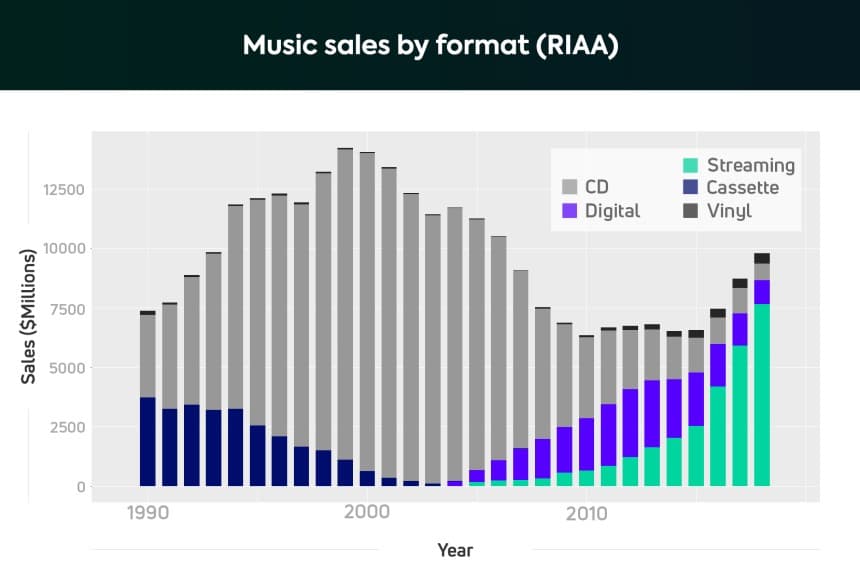
The way vinyl is pressed is undoubtedly different from the way CDs are made and the way digital files play music. It produces a warmer tone that a lot of people really enjoy. Some of this is due to the fact that it is an analog piece of equipment, but some is also because of the fact that vinyls are just made differently. The crackle from dust on the needle or within different parts of the grooves is often romanticized.
Some people use record players because of the fact that they have big collections of vinyl around the house. For example, perhaps your father or grandfather collected vinyl. You can tap into these rare reserves!
Some people also use turntables for DJing or for sampling from old records in the process of producing new music. The possibilities are wide-reaching.
Because of all of the advances in technology the audio world has seen in recent years, there is also a lot that modern record players can incorporate. Some have inbuilt radios, others have Bluetooth connectivity, so you can link to your phone and use the inbuilt speakers to listen to your music library on your phone.
When looking at the anatomy and terminology of record players there are some more terms you might come across, which it is helpful to gain an understanding of.
Anti-Skate – this is usually a dial on the tonearm which controls the force being applied. This means that you can stop too much inward force when the record is being played. This is a good way to stop distortion or “skating” and skipping.
Cueing – the cueing is made to lift and lower the arm. It can cause records to scratch if you don’t use it properly, so be careful. This is what gives the record the contact with the needle and means it can start to generate sound.
Speeds – different records may play at different speeds. A lot of this is based on how old the vinyl is. If you buy a modern record player, it may have different settings for “45” or “33 ⅓” and you can set these accordingly. The vinyl you are buying will also say what speed it needs to be played at.
Pitch Adjustment – in some older turntables you might have to fine tune the rotation speed. This means that you can use the pitch adjustment to ensure that the frequency level is correct. This can be a complex thing to do.
If someone had told you 20 years ago that people would be listening to vinyl so much, you might not have believed them. This medium was once viewed as defunct, but now it is very much back. A lot of bands and artists are releasing their music on vinyl, and you might want to take advantage.
Our guide answers your questions on “how does a record player work?” and provides information on the terminology, so next time your audiophile friends start talking about their record players, you can join in the chat. Once you get started with record players, you’re likely to get a real appetite for vinyl.
